Introducing Allium Flavors: Garlic And Shallots
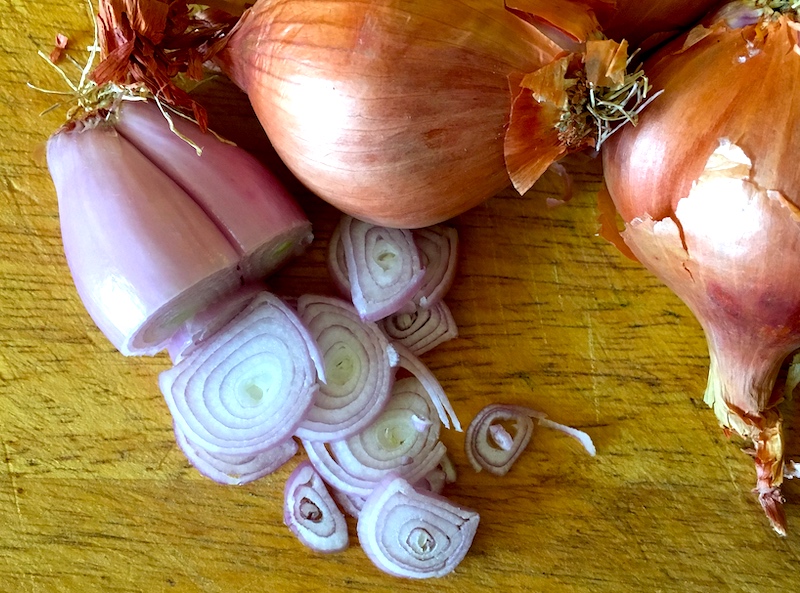
Garlic and shallots are two popular members of the allium family, which also includes onions, leeks, and chives. These ingredients are commonly used in cooking to add flavor and depth to dishes. While garlic is known for its strong and pungent taste, shallots offer a milder flavor with a subtle hint of sweetness. Both garlic and shallots bring their unique aromas and tastes to various cuisines, making them essential ingredients in many recipes. In this article, we will explore the flavor profiles, culinary uses, and health benefits of garlic and shallots, as well as provide tips on incorporating them into your cooking.
1 Overview Of Garlic Flavor Profile
Garlic is known for its distinct and robust flavor profile. It has a strong, pungent taste that adds depth and complexity to dishes. The flavor of garlic can be described as savory and slightly spicy, with a hint of sweetness. When cooked, garlic becomes milder and develops a slightly nutty and caramelized taste. It provides a rich umami flavor to various cuisines and is often used as a base ingredient in many recipes. The aroma of garlic is strong and aromatic, making it a staple in kitchens around the world.
2 Overview Of Shallots Flavor Profile
Shallots have a unique flavor profile that sets them apart from onions and garlic. They have a milder and sweeter taste compared to onions, with a hint of garlic-like undertones. Shallots offer a delicate and subtle flavor, making them ideal for enhancing and balancing the taste of various dishes. They add a gentle, yet distinct, onion-like flavor that is not overpowering. Shallots have a slightly caramelized and sweet taste when cooked, adding depth and complexity to sauces, dressings, and marinades. Their flavor profile makes them a versatile ingredient in both savory and sweet recipes.
Culinary Uses Of Garlic And Shallots
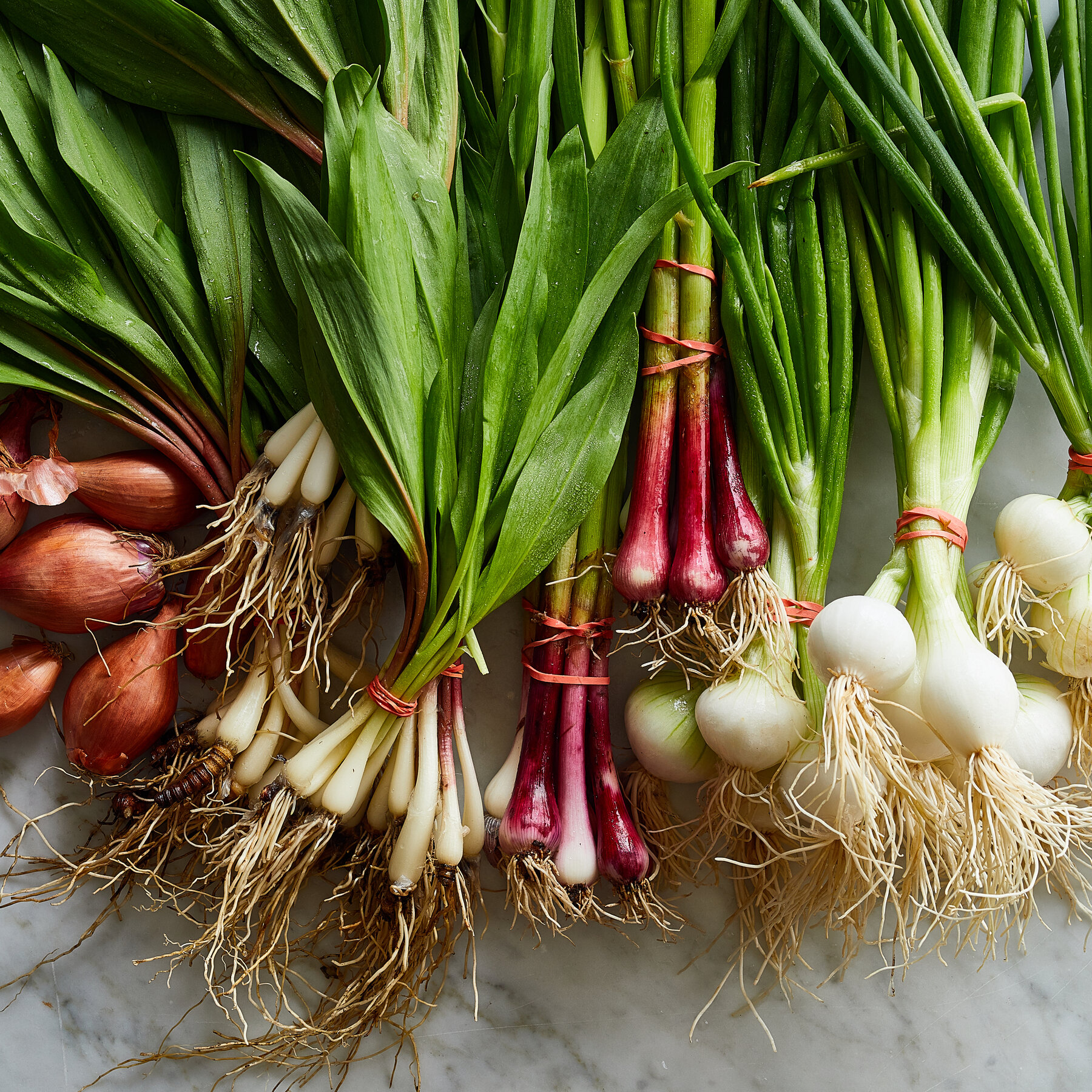
Garlic and shallots are versatile ingredients that enhance the flavor profile of various dishes. They are commonly used in cooking to add depth and aroma to recipes.
Culinary Uses of Garlic:
- Garlic is often used as a base flavor in many cuisines, serving as the foundation for sauces, soups, and stews.
- It can be minced, crushed, or roasted to release its intense and pungent flavor.
- Garlic adds a bold and savory taste to pasta dishes, stir-fries, roasted meats, and marinades.
- It can also be used to make garlic butter, which is perfect for spreading on bread or seasoning grilled vegetables.
Culinary Uses of Shallots:
- Shallots are prized for their delicate and sweet flavor, making them a popular choice in French cooking.
- They are commonly used in vinaigrettes, dressings, and sauces to add a subtle onion-like taste.
- Shallots can be thinly sliced and caramelized to bring out their natural sweetness, enhancing the flavor of roasted vegetables and meats.
- They can also be pickled or used as a garnish to add a mild and elegant touch to salads, seafood, and other dishes.
In summary, garlic and shallots both have distinctive flavors that can elevate the taste of various dishes. Whether you prefer the boldness of garlic or the subtlety of shallots, these versatile ingredients are essential in the culinary world.
1 Cooking Techniques With Garlic
Garlic is a versatile ingredient that can be used in various cooking techniques to enhance the flavor of dishes. Here are some popular techniques for using garlic in cooking:
- Mincing: Finely chop cloves of garlic to release its potent flavor. Mince garlic before adding it to sauces, marinades, or stir-fries.
- Roasting: Roasting garlic cloves brings out a sweet and mellow flavor. Wrap whole cloves in foil and bake until soft and golden. The roasted garlic can be spread on bread or used as a topping for roasted vegetables or meats.
- Sautéing: Heat garlic in oil or butter over medium heat until fragrant and lightly golden. Sautéed garlic is a great base for many dishes, such as pasta sauces, stir-fries, and soups.
- Infusing: Infuse the flavor of garlic into oils or vinegars by heating them with garlic cloves. This infused oil or vinegar can be used as a dressing or marinade for added flavor.
Remember to adjust the cooking time and heat to prevent burning the garlic, as it can turn bitter if overcooked.
2 Cooking Techniques With Shallots
Shallots can be used in various cooking techniques to add a delicate and slightly sweet flavor to dishes. Here are two popular methods for incorporating shallots into your cooking:
- Sautéing: Heat some butter or oil in a pan and add finely chopped shallots. Cook them over medium heat until they become translucent and lightly golden. Sautéed shallots are a great base for sauces, soups, and stir-fries.
- Pickling: You can pickle shallots to preserve their flavor and add a tangy and slightly sweet element to your dishes. Simply slice the shallots thinly and place them in a jar with vinegar, sugar, and any additional flavorings you desire. Allow them to marinate for a few hours or overnight before using them as a condiment or garnish.
Health Benefits Of Garlic And Shallots
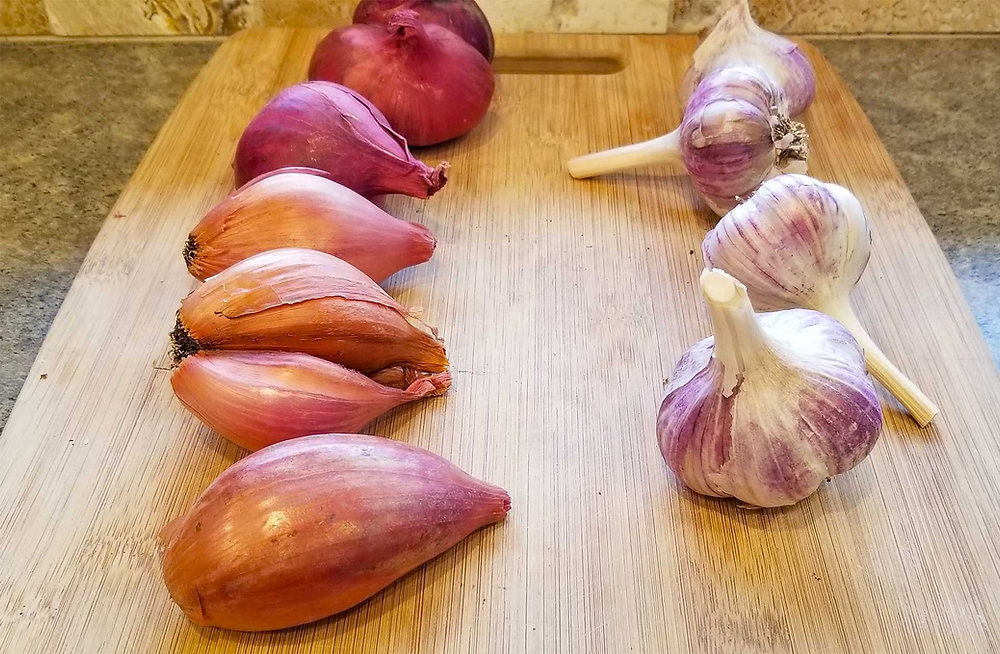
Garlic and shallots offer various health benefits due to their unique nutritional profiles. Garlic contains natural compounds such as allicin and sulfur compounds, which have antioxidant and antimicrobial properties. These compounds may help reduce the risk of cardiovascular diseases, lower cholesterol levels, and boost immune function. Shallots, on the other hand, are rich in antioxidants like quercetin and anthocyanins, which have anti-inflammatory properties and can contribute to improved immunity. Incorporating garlic and shallots into your diet can be a delicious way to enhance your overall health and well-being.
1 Nutritional Value Of Garlic
Garlic is packed with essential nutrients that offer numerous health benefits. It is rich in vitamins C, B6, and manganese, which support immune function and promote brain health. Garlic is also a good source of minerals like selenium and phosphorus, which are important for maintaining healthy bones and teeth. Additionally, garlic contains sulfur compounds, such as allicin, that have potent antioxidant properties. These compounds can help reduce inflammation, lower cholesterol levels, and improve cardiovascular health. Incorporating garlic into your diet can be a flavorful way to boost your overall nutrition and support your well-being.
2 Nutritional Value Of Shallots
Shallots, like garlic, are packed with essential nutrients that contribute to overall health. They are a good source of vitamins C and B6, which boost immune function and support brain health. Shallots also contain minerals such as manganese, which plays a role in bone health, and potassium, which helps maintain proper heart function. Additionally, shallots contain antioxidant compounds that help reduce inflammation and protect against cellular damage. Incorporating shallots into your diet can add depth of flavor to your dishes while providing valuable nutrients.
Flavor Comparison: Garlic Vs Shallots
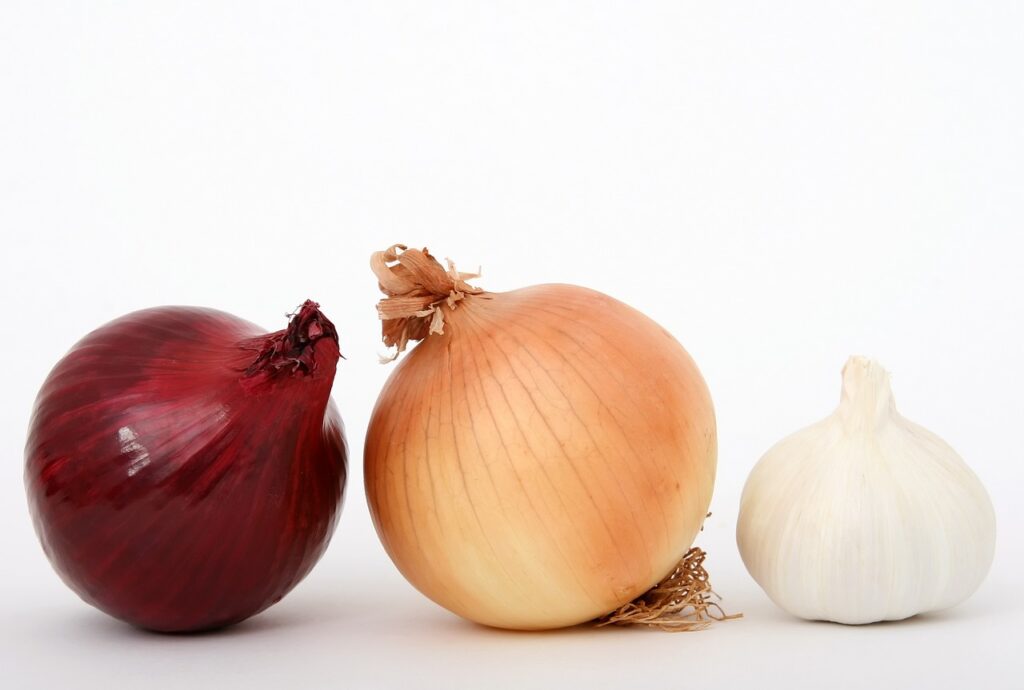
When it comes to flavor comparison, garlic and shallots offer distinct taste profiles. Garlic is known for its strong and pungent flavor, adding a bold and savory kick to dishes. On the other hand, shallots provide a more delicate and sweet taste, adding subtle depth to recipes. While both ingredients belong to the Allium family, their flavor differences make them suitable for different culinary applications. Whether you’re looking for a robust and intense flavor or a subtle and sweet touch, choosing between garlic and shallots can greatly enhance the taste of your dishes.
1 Aroma And Taste Variations
Garlic and shallots offer distinct aroma and taste variations. Garlic has a strong and pungent aroma, filling the kitchen with its signature fragrance. It adds a bold and savory kick to dishes, enhancing the overall flavor profile. Shallots, on the other hand, have a more delicate and subtly sweet aroma. They provide a mild and slightly onion-like taste, adding depth to recipes without overpowering other flavors. Whether you prefer the boldness of garlic or the subtlety of shallots, both ingredients bring unique aromas and tastes to culinary creations.
2 Versatility In Different Cuisines
Garlic and shallots are widely used in various cuisines around the world, making them highly versatile ingredients. In Italian cuisine, garlic is a staple and is used in dishes like pasta, pizza, and bruschetta. Shallots, on the other hand, are popular in French cuisine, where they are often sautéed and used in classic sauces like beurre blanc. Both ingredients are also commonly found in Asian cooking, such as stir-fries, curries, and marinades. Their versatility allows them to enhance the flavors of dishes from different cultures, making them essential components of global cuisine.
Incorporating Garlic And Shallots In Recipes
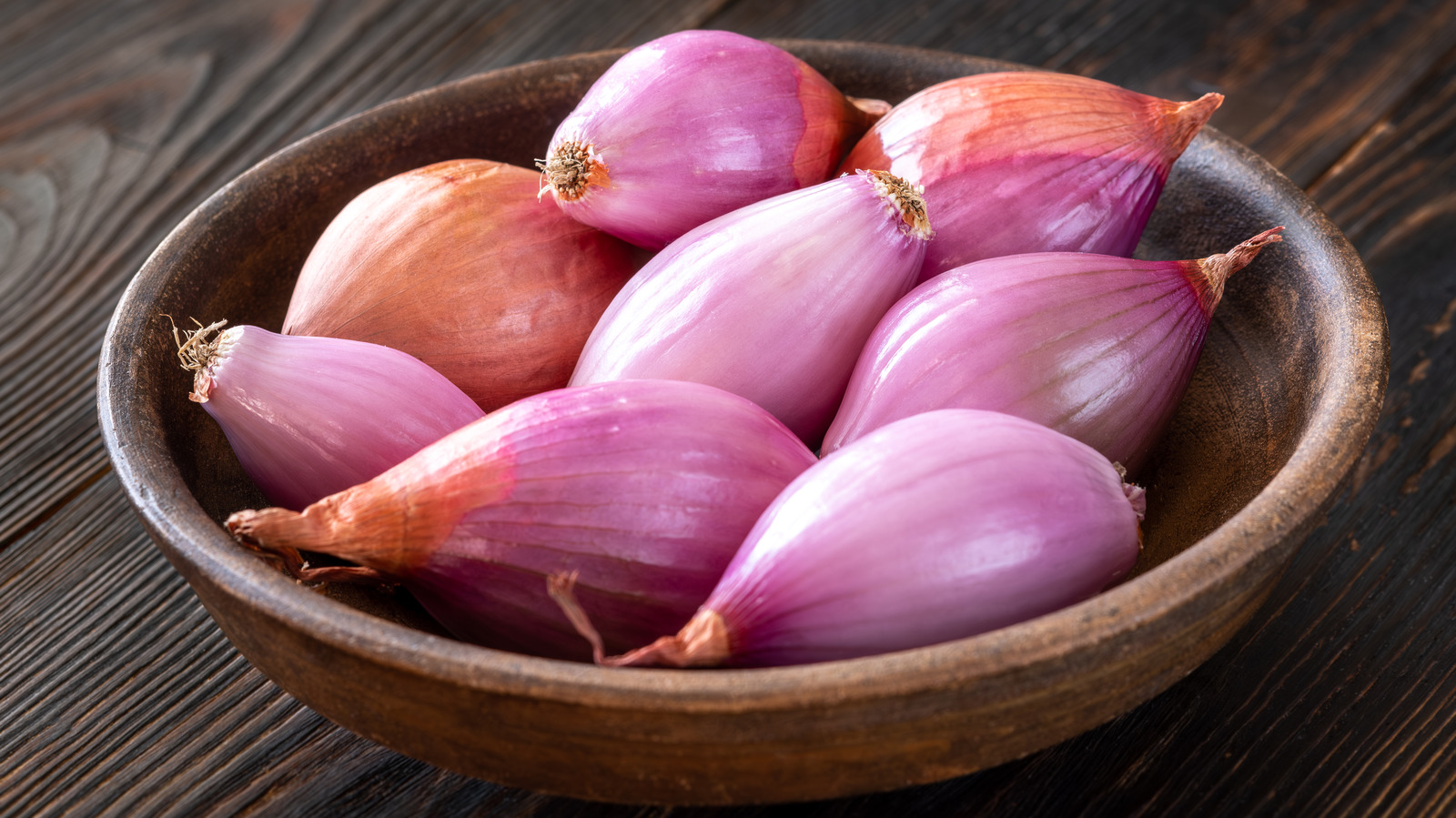
When it comes to incorporating garlic and shallots in recipes, the possibilities are endless. Both ingredients add depth and complexity to a wide range of dishes. Here are some ideas on how to use garlic and shallots in your cooking:
- Garlic:
- Roast whole cloves and spread on crusty bread for a delicious appetizer.
- Sauté minced garlic in olive oil as a base for pasta sauces or stir-fries.
- Make garlic butter by blending minced garlic with softened butter, perfect for spreading on bread or melting over cooked vegetables.
- Shallots:
- Slice shallots thinly and fry them until crispy for a crunchy topping on salads or soups.
- Sauté chopped shallots with mushrooms and white wine for a flavorful sauce.
- Add minced shallots to vinaigrettes and dressings for a touch of sweetness and depth.
Remember, the key is to experiment and find the balance of flavors that suits your taste.
1 Recipes Featuring Garlic
Garlic is a versatile ingredient that adds robust flavor to a variety of dishes. Here are some delicious recipes that showcase the distinct taste of garlic:
- Garlic Butter Shrimp: Sauté shrimp in a mixture of melted butter, minced garlic, and herbs for a quick and flavorful seafood dish.
- Roasted Garlic Chicken: Rub a whole chicken with garlic, olive oil, and spices, then roast until golden and juicy.
- Garlic Parmesan Pasta: Toss cooked pasta with a flavorful sauce made from garlic, Parmesan cheese, butter, and cream for a creamy and comforting meal.
- Garlic Herb Roasted Potatoes: Toss potatoes with minced garlic, herbs, and olive oil, then roast until crispy and golden brown.
- Garlic Bread: Spread a mixture of minced garlic, butter, and herbs on bread, then bake until crisp and fragrant.
These recipes will showcase the bold and aromatic flavors of garlic, taking your dishes to the next level. Enjoy!
2 Recipes Featuring Shallots
- Shallot and Mushroom Risotto: In a pan, sauté thinly sliced shallots and chopped mushrooms in butter until golden. Add Arborio rice and cook until translucent. Gradually add vegetable broth, stirring constantly until the rice is cooked and has a creamy texture. Finish with Parmesan cheese, fresh thyme, and a dash of white wine for extra flavor.
- Grilled Steak with Shallot and Red Wine Sauce: Sear steaks on a hot grill until desired doneness. In a separate pan, cook minced shallots in butter until caramelized. Deglaze the pan with red wine and reduce until syrupy. Stir in beef broth and simmer until the sauce thickens. Serve the grilled steak with the shallot and red wine sauce drizzled on top for a savory and indulgent meal.
Conclusion
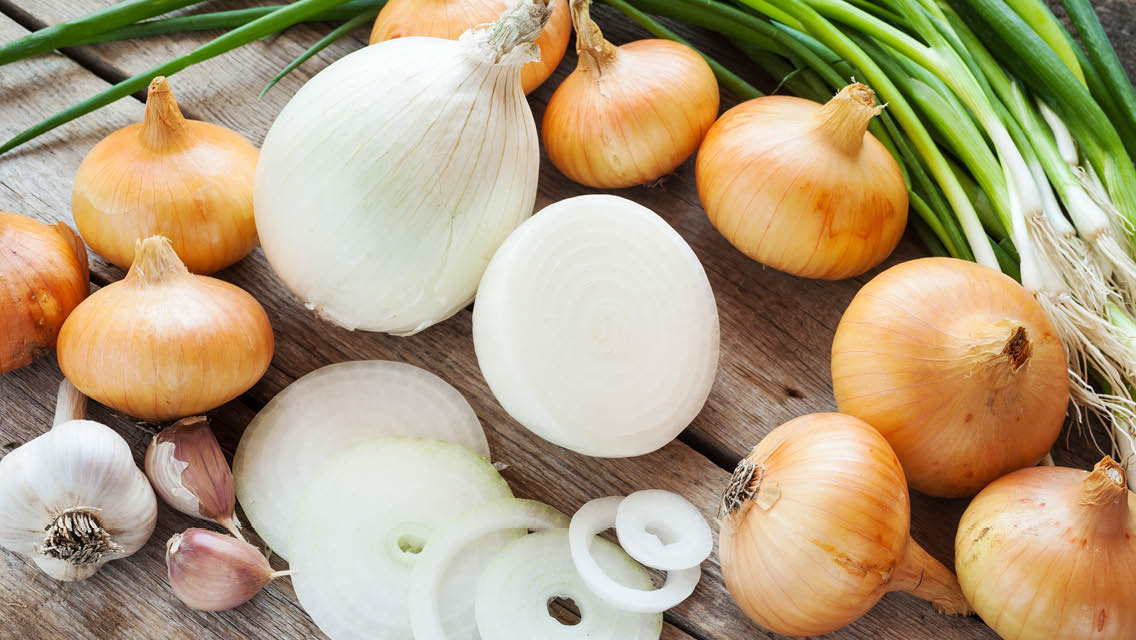
In conclusion, understanding the differences between garlic and shallots can elevate your culinary creations to new levels. While both are members of the Allium family, shallots offer a milder and sweeter flavor, making them a suitable substitute for onions. On the other hand, garlic adds a pungent kick to dishes and comes in varying sizes and potencies. Incorporating these aromatic ingredients into your recipes can enhance the overall taste profile and create unique flavors. Whether you choose garlic or shallots, their distinct qualities will undoubtedly enrich your cooking experience.
1 Summary Of Allium Flavors Differences
The differences between garlic and shallots can be summarized as follows:
- Garlic has a strong, pungent flavor, making it ideal for savory dishes that require a bold taste. Shallots, on the other hand, offer a milder and sweeter flavor, perfect for adding a delicate touch to salads, sauces, and other dishes.
- In terms of appearance, garlic bulbs consist of cloves enclosed in a papery skin, while shallots resemble small onions with multiple cloves in a single bulb.
Understanding these nuances allows chefs and home cooks to choose the right allium flavor to enhance their recipes.
2 Tips On Pairing Garlic And Shallots In Cooking
When it comes to pairing garlic and shallots in cooking, here are two tips to keep in mind:
- Balance the flavors: Garlic’s strong and pungent taste can overpower the delicate sweetness of shallots. To create a harmonious balance, use them in equal proportions or adjust according to your preference.
- Enhance aromatics: Combining garlic and shallots can create a flavorful base for many dishes. Start by sautéing minced garlic and shallots in oil or butter until they become fragrant. This aromatic foundation can elevate the taste of soups, stews, stir-fries, and sauces.
FAQ About Garlic Vs Shallots: Exploring Allium Flavors
Q: What is the main difference between garlic and shallots in terms of flavor?
A: Garlic has a pungent, strong flavor with a hint of sweetness, while shallots offer a milder, sweeter taste with subtle onion notes.
Q: Can garlic and shallots be used interchangeably in recipes?
A: While both garlic and shallots belong to the allium family, they have distinct flavors. Garlic is often used for its bold taste, while shallots are preferred for a more delicate flavor profile. They can be used interchangeably based on personal preference and the dish being prepared.
Q: Are there any health benefits associated with garlic and shallots?
A: Both garlic and shallots are known for their health benefits. Garlic is believed to have antimicrobial and antioxidant properties, while shallots are rich in vitamins and minerals. Incorporating both into your diet can contribute to overall wellness.
Q: How should garlic and shallots be stored to maintain their freshness?
A: Both garlic and shallots should be stored in a cool, dry place away from direct sunlight. It is best to store them in a ventilated container or a mesh bag to allow air circulation. Avoid storing them in the refrigerator, as moisture can cause them to sprout or become moldy.
Q: Can garlic and shallots be used in combination to enhance flavors in cooking?
A: Yes, garlic and shallots complement each other well in many recipes. Their combined flavors can elevate the taste of dishes such as stir-fries, soups, sauces, and marinades. Experimenting with different ratios of garlic to shallots can create unique flavor profiles in your cooking.
Q: Are there any culinary tips for using garlic and shallots effectively in dishes?
A: For a more pronounced garlic flavor, mince or crush the cloves before adding them to a dish. Shallots are best thinly sliced or chopped to release their sweetness. Using a combination of both ingredients can add depth and complexity to the overall taste of a dish.
Q: What are some popular dishes that feature the distinct flavors of garlic and shallots?
A: Garlic is commonly used in dishes like pasta aglio e olio and garlic shrimp, while shallots shine in recipes such as coq au vin and vinaigrettes. Both ingredients are versatile and can enhance the flavor profile of a wide range of culinary creations.

Hot Pot Chinese Restaurant, located in Mechanicsville, MD 20659, is a culinary destination that offers a delightful array of Chinese cuisine. From the cozy ambiance to the delectable dishes, Hot Pot Chinese Restaurant is dedicated to providing an exceptional dining experience for all patrons. Since our establishment, Hot Pot Chinese Restaurant has been committed to serving the finest Chinese food, offering a diverse menu that caters to a wide range of tastes. Whether you’re craving traditional favorites like Kung Pao Chicken and Mongolian Beef or seeking out more adventurous options like Szechuan Spicy Hot Pot, our menu has something to satisfy every craving.